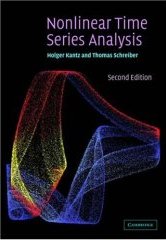Black boxes: If models that are not designed to reflect the actual processes in the under-lying systems are called black boxes. Then, in that respect ANN are indeed black boxes. ??check
Models or Laws: Model is a relation or a set of relations that relate the various components of a system. There are two ways to reach a model
- one is to study the physical and chemical processes and then use mathematical statements to express these processes. The mathematical statements would be called models; and
- two is by studying various components and finding the statistical relationships between them. The statistical relationships would be called models.
could both the methods be called
empirical?
in any case, from
kingsland's book pg. 100 Thompson's hypothesis is presented
If ecological interaction were found to display an underlying regularity, and if this regularity could be described mathematically, then mathematics might serve as a theoretical basis for population ecology.
Also, the book mentions on pg 85 that the term laws (and may i add models, as well) has been used in more than one way -
Specifically, Pearl used the term 'the
law of population growth' for the logistic curve to possess universal applicability. Where as, Lotka used the same term
to mean an empirical relation between events having no apparent connection to principles of a more general nature. By this criteria, any other equation fitting the observations would be qualified equally as a law.
Lotka perceived that an empirical law of this sort imposed limits in two ways. First, because the fundamental principles underlying the curve were unknown (MARK1), the exact form of the equation had to be determined anew for each examples. Second, it was not possible to extrapolate much beyond the observed events, because unknown factors might come into play outside the observed range and cause departure from the law
Talking about the logistic curve as the law of population growth - the value lay not in universality or predicting but
in the fact that it could be so easily derived from first principles, and that its constants r and K were biologically meaningful. The equation represented in other words an argument about the population which could be useful as tool of research.- MARK2
Lotka finds use of such a law in this way
"An empirical formula is therefore not so much the solution of a problem as the challenge to such solution. It is a point of interrogation, an animated question mark."
This is later (Pg 87) explained as -
by looking at how a population departs from the law, one may get a more realistic idea of the actual mechanism underlying the population growth... Knowing how a population deviates from the law tells one how to refine the initial assumptions to get more accurate understanding of how populations behave.
By reading MARK1 and MARK2 above, what I am trying to do is see if there is a fundamental similarity between the logistic curve and ANN model as population law. If so, then we know exactly where to place the ANN models in the study called population ecology or population dynamics of phytoplankton
[Note to self - there needs to be a discussion on exactly which term would I be using]. And, thus how far can the results be extrapolated.
My current hypothesis (??) is -
By developing a series of empirical models and using those empirical models to
- evaluate the technique (the model is objectively evaluated by having a large percentage of testing data)
- study how the relationship varies (by performing Sensitivity analysis on model that have been found to be good approximation using objective measures)
the next things -
1) look at what exactly is Thompson above is talking about.
2) See exactly what assumption and limitation are associated with the SA techniques that I have used.
3) A very brief discussion on which term (phytoplankton, blue-green algae, any other) would be used and why.




